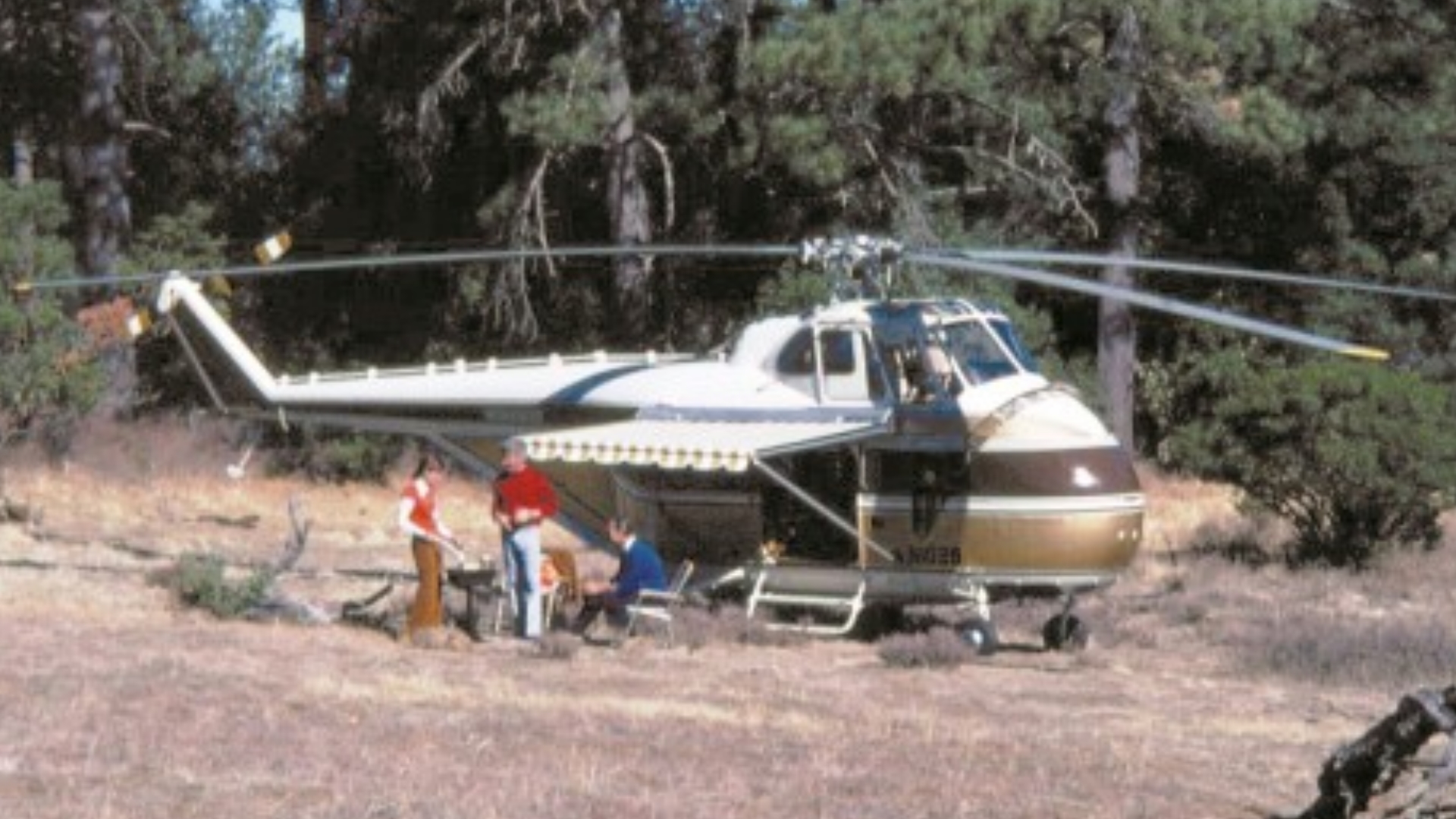

The motorhome seems like a great idea until you have to actually drive it somewhere. As it turns out, the car and the house don’t have enough in common to be the best fit. But what about a house and a helicopter—what is the latter if not an airborne box that can be filled with the comforts of home? I guess that was the thought behind the Winnebago Heli-Home, a real flying RV that was actually marketed and sold by Winnebago in the late 1970s. A pretty perfect idea for vacations in 2020, too.
I would like to begin by saying that it’s unfortunate Winnebago didn’t actually try to make an existing RV model fly a la Eagle 5 in Spaceballs, but reality has its stubborn limits. Instead, beginning in 1975 it worked with a company called Orlando Helicopter Airways to acquire a fleet of ex-military Siksorky S-55 transport helicopters (also known as the H-19) and convert these surplus machines into something a little more homey.

And that didn’t mean slapping down carpet and a few folding beds. It meant amenities like hot and cold water, a 6,000 BTU air conditioner, 40,000 BTU furnace for heat, a full bathroom with a shower, a TV, a kitchen, a 3,500-watt generator, and more. So much more, actually, that the six people Winnebago claimed the Heli-Home could sleep would’ve been living a life of comfort and convenience anywhere they decided to land—and I do mean anywhere.
In addition to the standard landing gear, the Heli-Home could be obtained with optional floats. That meant you could forget the trouble of having to find a narrow clearing in the woods to land. You could just set right down on a lake and drop anchor. I’m not sure how much time I would want to spend with five other people inside a cramped helicopter that’s anchored in the middle of a lake, but then again I’ve never tried it. Perhaps 115 square feet feels bigger when there’s no property tax.

As far as engines went, you could’ve had an 800 horsepower piston-driven model, or a slightly larger 1,525 hp turbine-driven variant. That piston engine burned a lot of fuel and limited its range to around 300 miles, so it wasn’t exactly the “fly deep into the wilderness” experience it might look like unless you hopscotched between airports on your way into the bush.
The real sticky issue with this whole Heli-Home concept is not the engines or range, however. It’s the price. Even a base model would run you around $880,000 in today’s money, and a top of the line version was $1.4 million when adjusted for inflation.
But Winnebago figured this might be the case, so for $10,000 a week it would rent you a Heli-Home, assuming you could provide enough additional cash to hire a pilot, and pay for the fuel, of course. However, this rental scheme was not enough to save the idea. All in all, the company would go on to sell only 8 Heli-Homes to customers, none of which survive today.

Still, it was hardly a failure. That such an audacious plan made it off the drawing board and into the sky at all is pretty incredible, let alone selling a few. More important was its value as a marketing tool for Winnebago as it dealt with a sales slump in the wake of the mid-’70s oil crisis, as Air & Space Magazine points out. The Heli-Home garnered no shortage of attention from magazines like Popular Mechanics and potential customers who reportedly flocked to the few Winnebago dealerships where an example was on display to see a piece of the future of recreation.
Got a tip? Send us a note: tips@thedrive.com